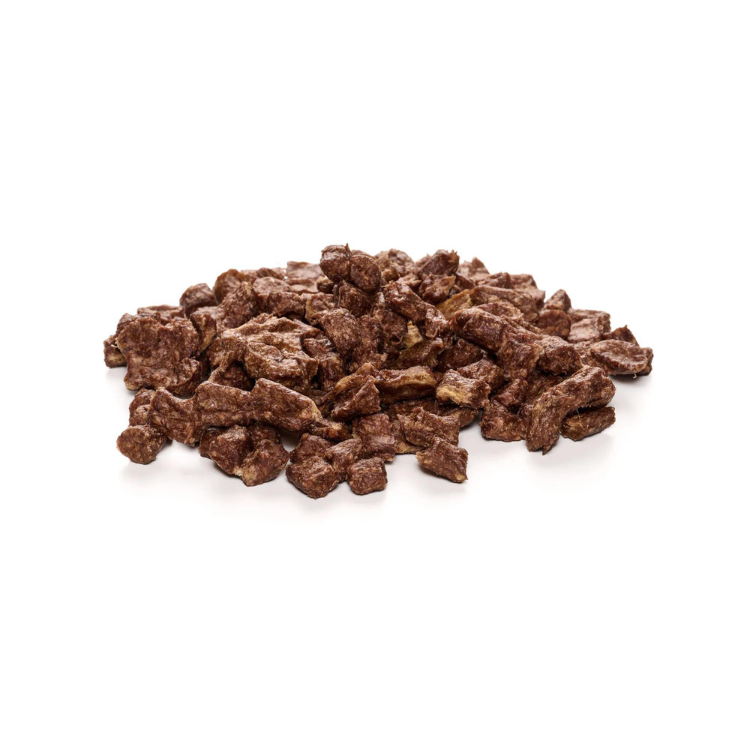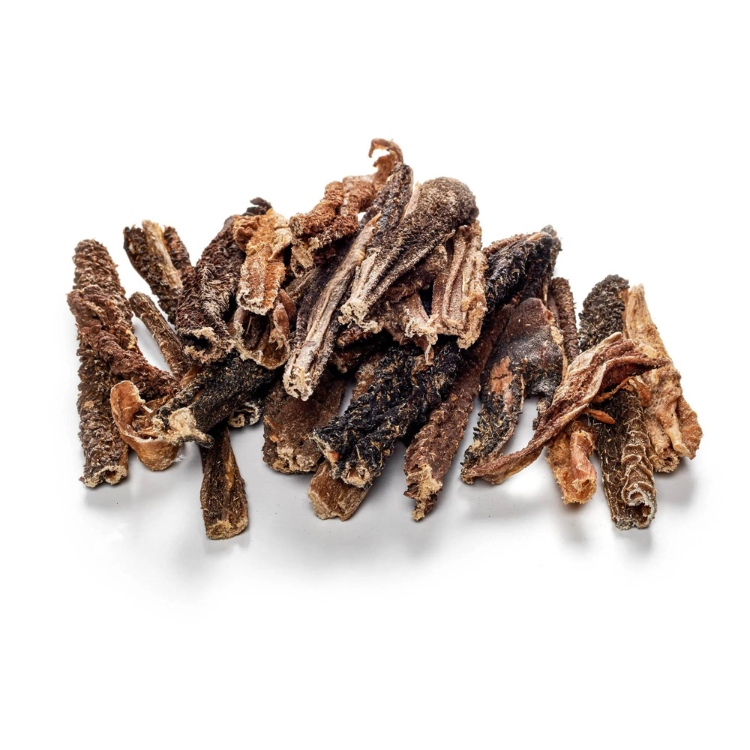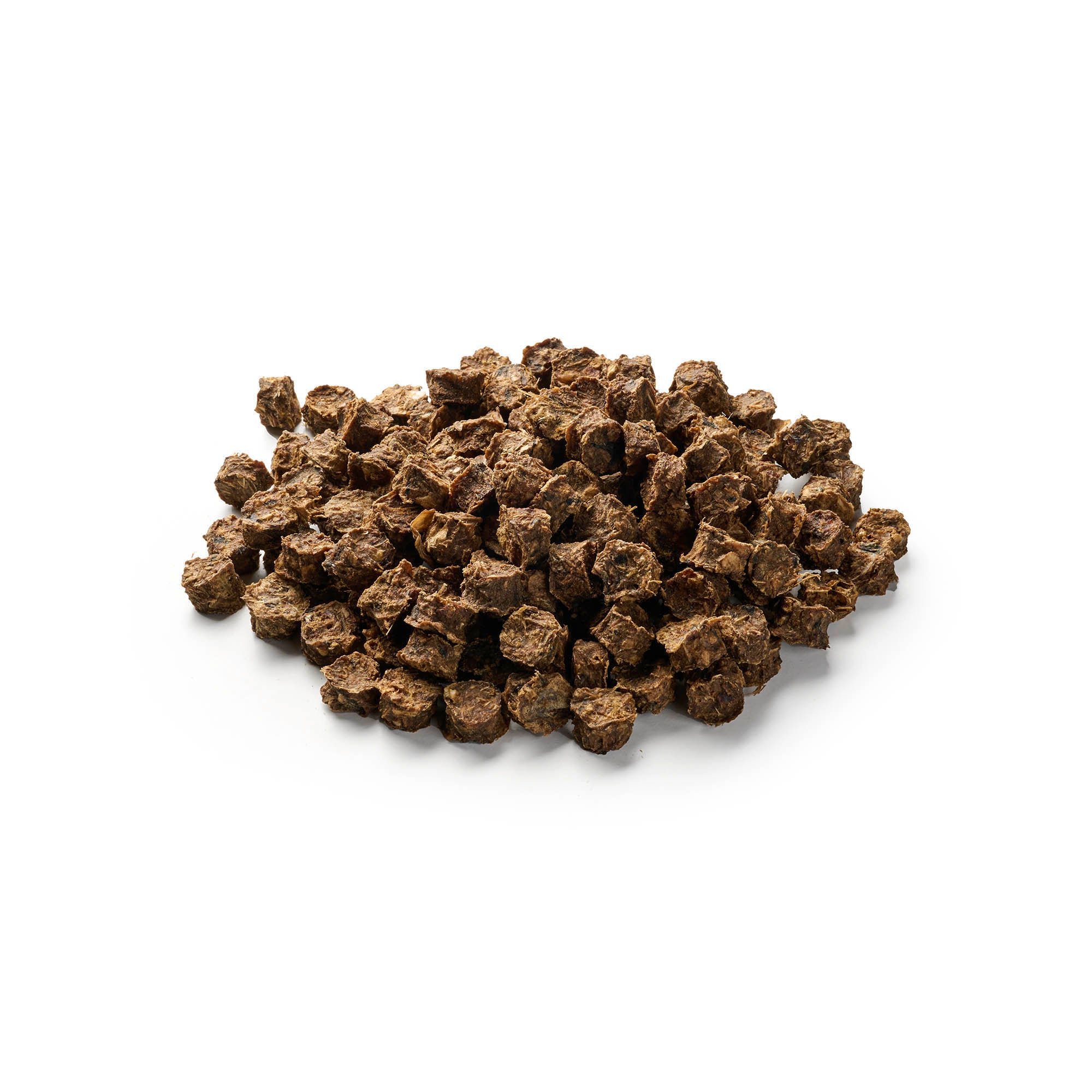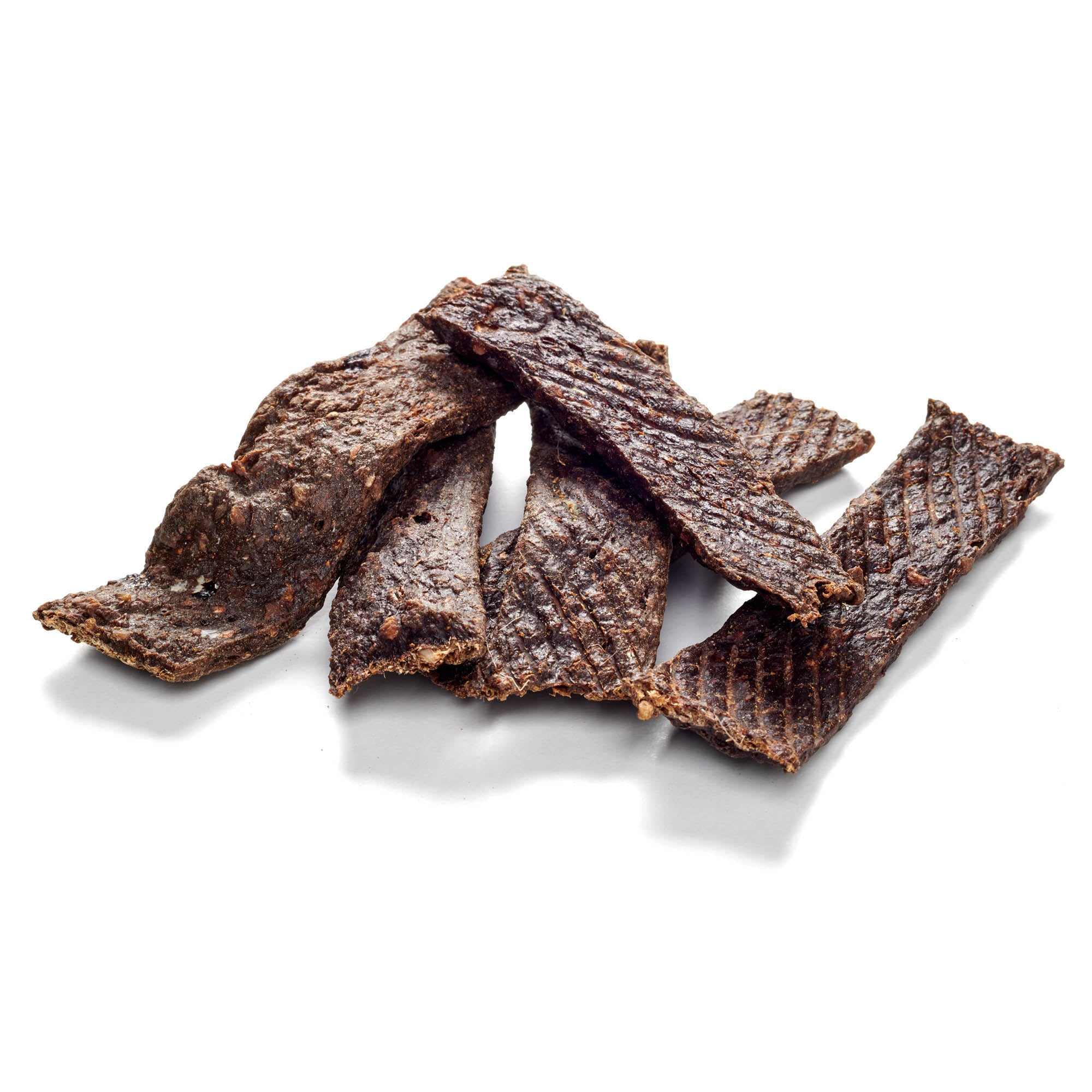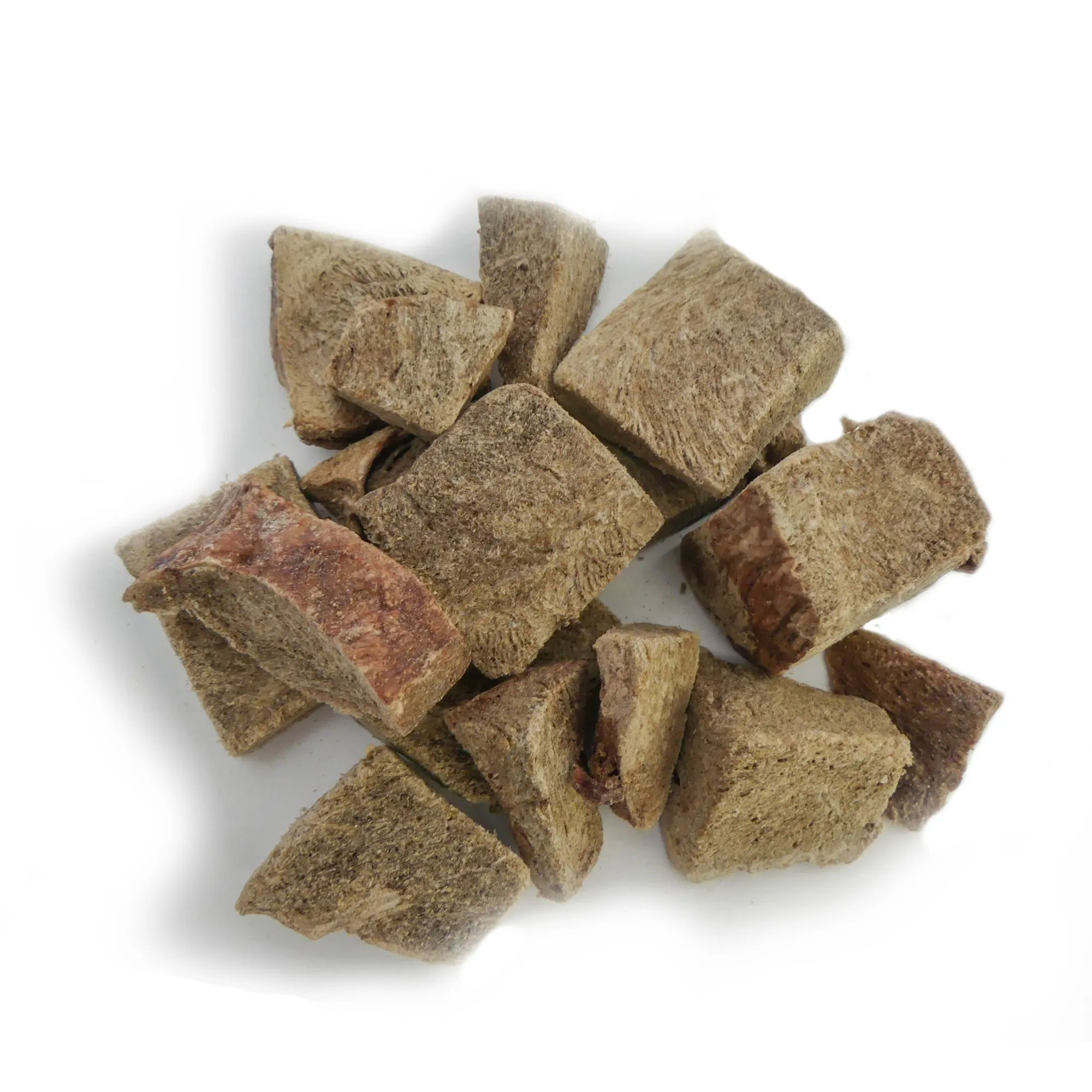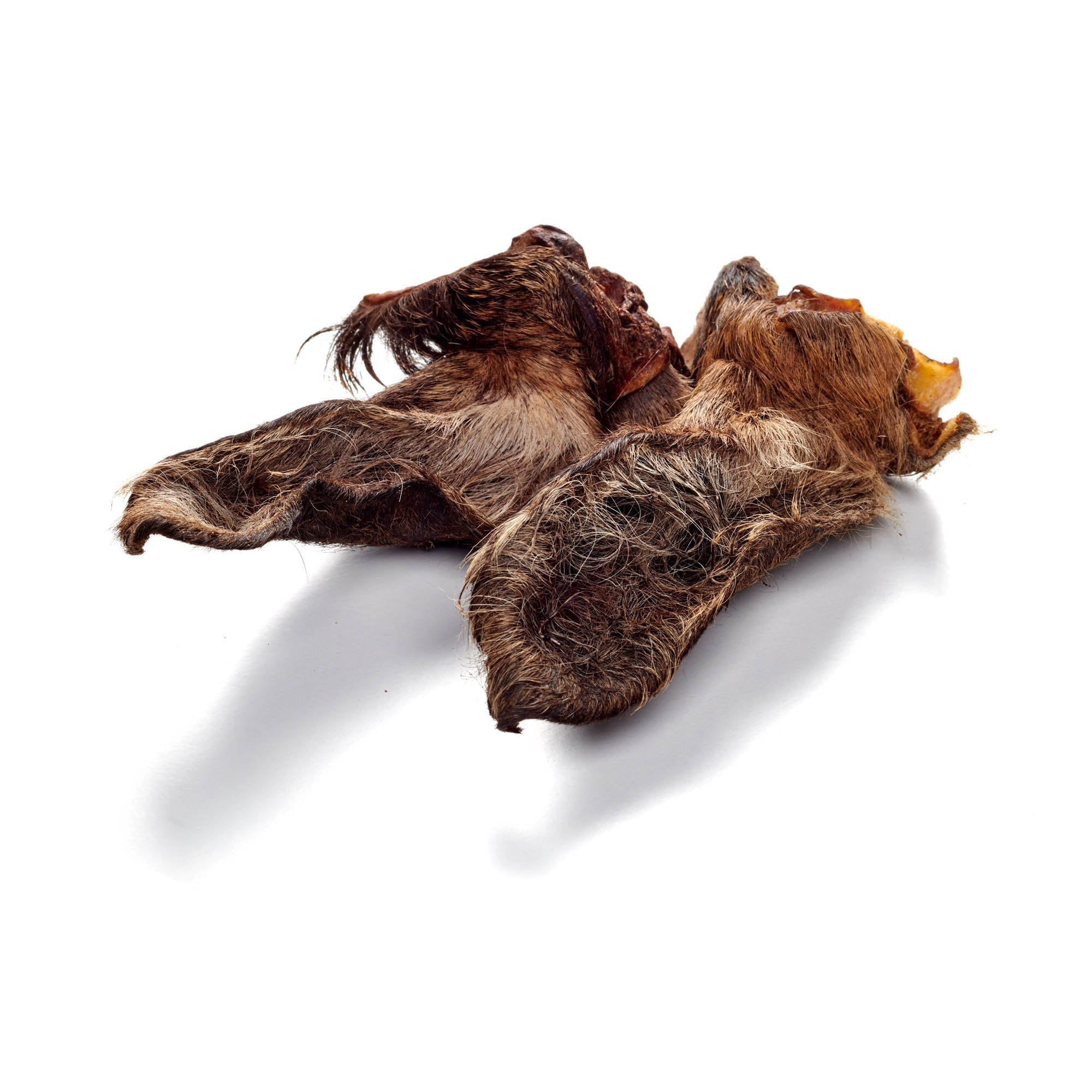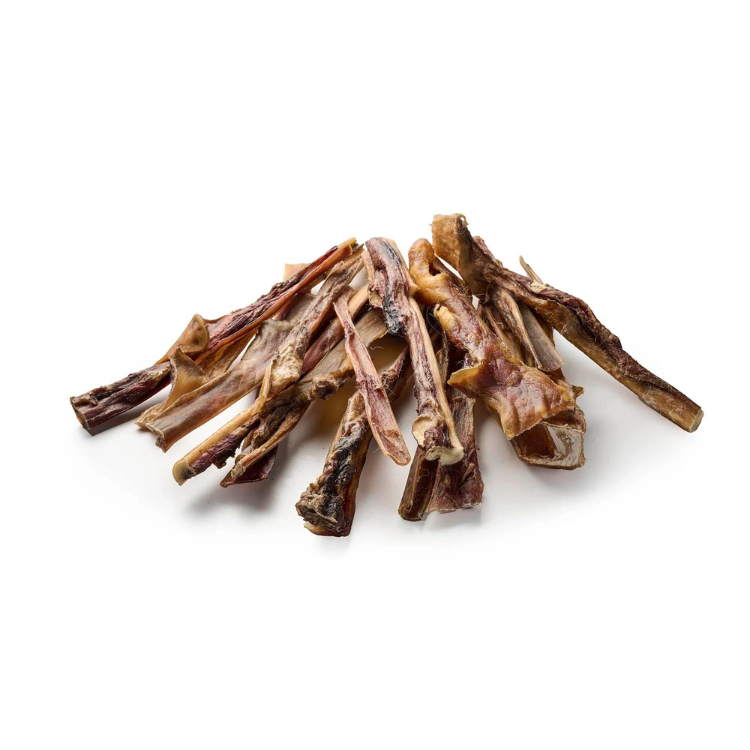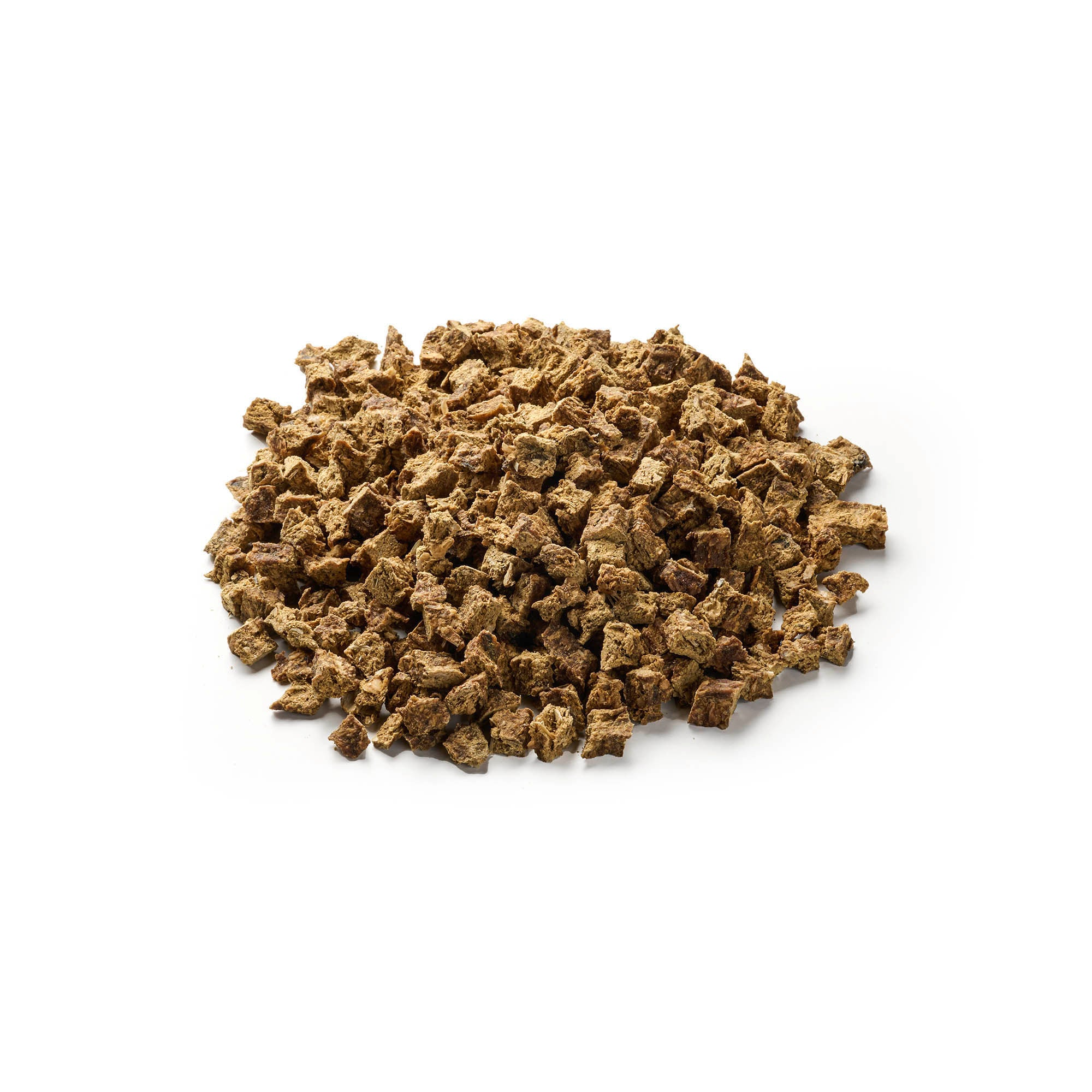
Rhodesian Ridgeback
Share
The Rhodesian Ridgeback is an extremely versatile dog from southern Africa. It is easily recognized by its distinctive ridge on its back and makes a good watchdog, hunting companion, tracker, but also as a family and companion dog. Originally used for lion hunting, it is now one of the most popular dog breeds.
Content: Rhodesian Ridgeback
Treat your dog to something special with our chew products!
Rhodesian Ridgeback - Profile
- Character: loyal, intelligent, dignified, gentle, courageous
- Size: Large
- Height: 61-69 cm
- Weight: 32-41 kg
- Life expectancy: 10-12 years
- Coat type: Short and dense with ridge on the back
- Colour: light wheat to red wheat colours
- Special features: Stripes against the direction of growth on the back – “Ridge”
- FCI Group: Hounds and Scenthounds and Related Breeds
Rhodesian Ridgeback - Special Characteristics
The Rhodesian Ridgeback is a very large and athletic dog with a special elegance. With its floppy ears, it is a very beautiful dog with a very strong and self-confident appearance. Its name-giving feature is the ridge of hair on its back that runs against the direction of growth and is the result of a genetic defect that has been enhanced by breeding.
The more intelligent and independent-thinking dogs require clear leadership and consistent training. A strong bond with the trainer is very important; a Ridgeback does not react to pressure or excessive strictness. On the other hand, they can be conditioned very well with rewards - just like Pavlov. The South African dogs develop very slowly and are only fully grown, mature dogs at 2-3 years of age.
For the reasons mentioned above, the Rhodesian Ridgeback is not recommended for beginners. The strong hunting instinct and stubbornness can only be controlled with clear leadership and sufficient exercise and physical activity.
Rhodesian Ridgeback - What should be considered regarding nutrition?
The Rhodesian Ridgeback needs high-quality food. Feeding carbohydrates is almost entirely unnecessary. Especially during the growth phase, too high a proportion of carbohydrates in the food can have an adverse effect on the skeleton. It is important that the food is high-quality and does not contain any inferior fillers such as flavor enhancers or preservatives. The amount of food depends on the dog's age and activity and should never be too high. June Ridgebacks have an increased need for calcium and phosphorus. In addition, an adequate supply of vitamins, minerals and trace elements should be ensured. The best time to feed is after major exertion. After that, a rest period should be observed. The dog should be accustomed to this as a puppy . To prevent gastric torsion, it is better to feed the dog several times a day in small amounts.
Dog chews available for happy and satisfied four-legged friends!
Rhodesian Ridgeback - Health and Care
Grooming the Rhodesian Ridgeback is limited to occasional brushing. Especially during the coat change , you will do your furry companion a favor by brushing him daily. However, the coat change is also rather light, which makes grooming even easier.
In addition, the South African is very easy to care for. However, regular checks of the ears, eyes, claws and teeth are recommended. For preventive dental care, appropriate chews are advisable. The dogs do not usually need a bath. However, stubborn dirt can be removed with a mild shampoo.
Due to the lack of an undercoat, the dogs are sensitive to cold. Therefore, a dog coat can be an advantage on cold days. However, the dog copes well with heat and even the hottest summer days do not bother the Ridgeback.
Rhodesian Ridgeback - Origin & History
The Rhodesian Ridgeback was bred in the 19th century by European colonial rulers in Rhodesia, now Zimbabwe. The dogs, which are widespread in southeast Africa, originated from a cross between English hunting dogs and the pariah dogs from the African savannah. They proved to be reliable helpers in lion and big game hunting and were also used as guard and protection dogs on Rhodesian farms. The Rhodesian Ridgeback has been a recognized dog breed since 1926. The first animals were introduced to Germany in the 1970s and have enjoyed increasing popularity ever since.
Rhodesian Ridgeback - The right accessories
As already described, it is a good idea to give your Ridgeback a winter coat. Because of its size and strength, a harness is preferable to a collar for Ridgebacks. However, this can be chosen variably depending on the activity. It is best to have both at home. It is very important to give your dog a place to retreat to. Large dog baskets with a cushion are ideal for this. Logic and intelligence games can also be used to mentally challenge and stimulate your dog.
Conclusion
The Rhodesian Ridgeback is an extremely versatile dog breed from southern Africa, known for its distinctive back ridge. Originally bred for lion hunting, it is now an excellent watchdog, hunting companion, tracker, family dog, and companion. Its special characteristics include loyalty, intelligence, dignity, gentleness, and courage. With a size of 61-69 cm and a weight of 32-41 kg, it is one of the large dogs with a short, dense coat that comes in colors ranging from light wheat to red wheat, with the name-giving feature being the ridge of hair on the back that runs against the direction of growth.
High quality dog snacks to pamper your dog, now available!

